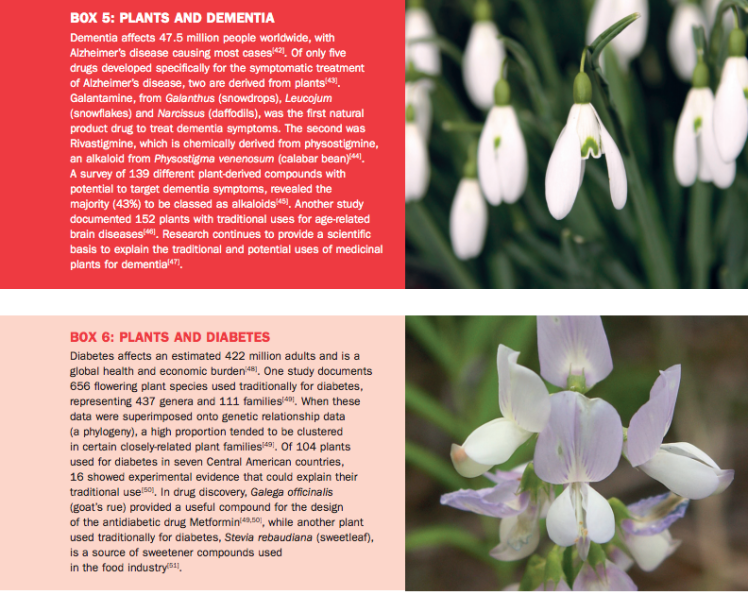Humans are inspired by nature in all sorts of ways. A substantial part of that natural world is the plants surrounding us. Some common, most rare, and many found medicinally useful to humans. Even some “useless” plants like Arabidopsis, thale cress, a mustard weed, has contributed human health through its place as a research organism.
Humans have derived a lot of medicinal uses from plants or at least tried using a lot of plants as medicines. Some of these turn out to actually work as medicines by modern scientific standards having known biological mechanisms. Artemisinin, from Artemisia annua, is anti-malarial and won the Nobel Prize in Physiology of Medicine in 2015 (for scientist Youyou Tu, PhD).

Bio-prospecting and discovery is one reason conserving and exploring nature matters. It’s where a lot of things we end up finding useful come from (e.g. too many to list). It may be an obvious point, but it’s one to make again and again. Humans are part of and reliant upon the natural world. Nature can literally make us healthier.
Kew Gardens released its second state of the World’s plants (SOTWP) report on Plant Day, May 18. I wrote a summary of the whole report for the AoB Blog. In this post, I’ll focus on the chapter on medicinal plants (pdf).
Humans have been using plants as medicines for a long time under several different principles before the era of modern science. I’ve written before about a hypothesis that if it’s edible in some way, some form, a human has tried it. Some things ingested would have had effects on the human body some how, and sometimes, negative effects like vomiting or skin lesions could be seen as “medicinal” with the idea that purging things, or making the body react in an extreme way seen as the “medicine” working. To be fair, that may well sometimes be correct. The process of discovering medicines from plants is partly one of isolating the components doing the treatment from those that do harm. For instance, Calabar beans (Physostigma venenosum, aka an “Ordeal fruit”) cause an upset stomach and can induce vomiting, but they contain a compound that can treat dementia according to the Kew Report.
Another compound from plants that treat dementia are snow drops (Galanthus), a plant that many like because it looks striking. These chemicals do belong to the chemical family known as alkaloids. Alkaloids are a big class of chemicals made by many plants that have a wide variety of effects on humans including caffeine, cocaine, and atropine.

The Kew report also cites medicinal plants that can help with diabetes. One example, though not quite a medicine, is a plant that allows avoidance of medical complications. Stevia is a non-sugar sweetener safe for diabetics to use to sweeten things. Using stevia as a sweetener is a more modern use, perhaps, but it is no less something that can improve quality of life.
The Kew Report cites >28,000 plant species listed as being used medicinally by the world’s cultures. Some of these are used as medicine even if they haven’t been studied as yet to see if there is something beyond medicinal. These plants are a big business and many are threatened with extinction due to human over-use and the popularity of the supplement market that has grown. Again, some of these plants likely do contain medicinal compounds, but haven’t been studied. Few of the plant species used medicinally are listed in regulatory documents according to the SOTWP. Th is an understudied area of science.
There are still active investigations to find medicinally useful plants, like the Quave lab’s efforts to identify new antibiotics derived from plants. There is still plenty to do to study what are traditionally medicinal plants and the Kew report provides a good starting point to organize such an effort.
Cover Image: Cover of the chapter on medicinal plants from the 2017 Kew State of The World’s Plants Report. Courtesy of Kew Gardens.